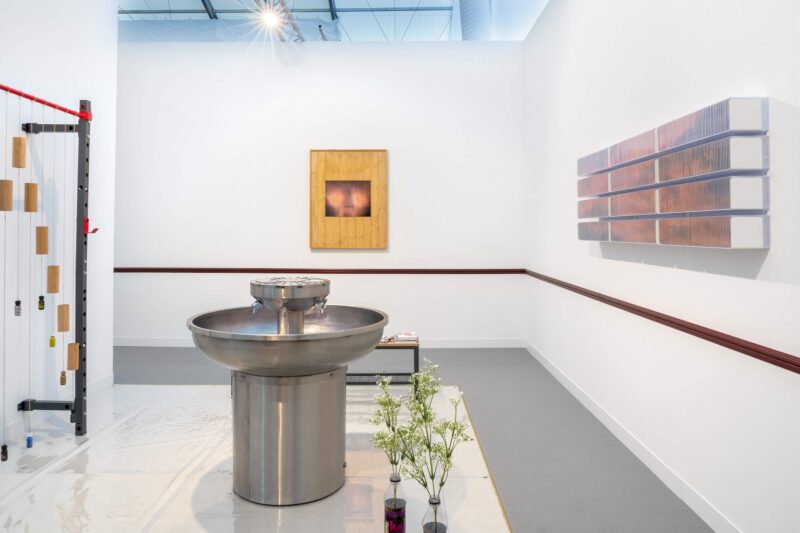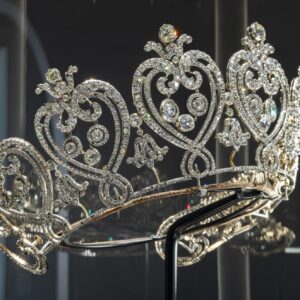The commercial gallery is a stage on which an elaborate and mysterious performance takes place. A sales executive takes a client around the exhibition, excreting a ludicrous and yet beguiling confection that sits perfectly between educational gallery tour and hard sell. It is delivered with seductive zeal, dressed up in an intoxicating mix of art historical vignettes, compelling aesthetic judgements, and a good smattering of mythology. But you cannot just walk in and announce that you want that painting on the wall, even if you are able and willing to pay. It matters who you are: part of a gallerist’s role is to ensure that the art ends up in the right places, meaning in the hands of serious collectors, reputable museums and those with whom it is beneficial for the artist to be associated. But this trend has abated in favour of mere celebrity endorsement.
The YBA phenomenon galvanised a trend for high art to meld with low culture, giving art the credibility of fashion and the business allure of real estate. Consequently, celebrity connections became an essential feature of the art gallery’s performance. Celebrities are good clients because they have money but no idea how to spend it, so can be swayed to support the market at the whim of dealers and advisers.
Unlike collectors such as Saatchi who, for all his foibles, has a genuine concern to collect and share art for solid cultural reasons, many celebrity art collectors are purely in the business of improving street cred for both themselves and the artist by mere association. It matters a lot less whether a Monochrome Butterfly Painting is safe in the hands of Daniel Radcliffe than it does that Hirst still appeals to the kids and Radcliffe is clever enough to dig contemporary art. From the gallery’s point of view, the sale involves a question of whether the buyer is cool enough, which is much simpler than the old convolution of studying the buyer’s market activity and scrutinising their collection.
This kudos-by-association approach reveals the fact that the exclusivity of art is ultimately about money and not about intellectual or cultural distinction, as it once was. This has had some brilliant and frankly ludicrous manifestations lately. Behind Jay-Z’s innocuous Picasso Baby turn and vacuous flirtation with Marina Abramavic is a £300 million art collection. Similar holdings are to be found everywhere, from Madonna to Elton John, where collections will generally include the high-price dead guys like Warhol and Basquiat as well as the still-manufacturing wonder-merchants, like Koons and Hirst. The celebrity collector is therefore assured of both their art historical knowledge and their impeccable contemporary taste, whilst feeding the artworld through both primary and secondary markets.
At this level, there is nothing culturally interesting going on, since it’s not very imaginative to collect Warhol, Basquiat and Koons. The only interesting thing about Harry Styles paying £2.8 million for a Basquiat is the mystifying realisation that One Direction make that much money. The more interesting case is where a seemingly bad celebrity starts collecting some really good art. I have nothing against Harry Styles, but there is nothing about him to suggest he is the next Saatchi, except perhaps the hair. He appears to be an extraordinarily cute, well-dressed, good-humoured boy with no discernible talent or prospect of developing any, but what he lacks in skills he makes up for in luck and Direction.
But the boy shocked us with flourish of good taste and artistic credibility when he spent £20,000 on twenty works by the brilliant, and until now underrated, Hayden Kays. Kays’ typewriter pieces – A4 pages combining striking imagery with texts that say things like ‘If I wasn’t straight I’d definitely be gay’ – were the subject of an epic and mesmerising exhibition, The Hot 100, at London’s Cob Gallery last year, assuring most critics that Kays is an important young talent.
Styles’ shrewd purchase, and by extension Kays’ brilliant art, made it into the Daily Mail and the popworld press, lending credibility to both pop star and artist. But while all the normal processes of celebrity endorsement and artworld performance are in place here, it is important to note that Styles has acted with courage, integrity and aesthetic judgement to back a young, relatively unknown artist. In this case – as in the early days of Saatchi and Hirst – support from the right Direction can take an artist a long way. And while that journey is in the hands of the market, the publicity machine and the vagaries of fame, it is also partly in the hands of the collector who is making judgements of taste that serious critics take note of.
Styles has broken away from the trend of his fellow celebrity art collectors by not blindly following the fashion and instead exercising his own judgement on something of a gamble. I suspect that move will pay dividends for both him and Kays. In order for artists, and art in general, to benefit from celebrity clients it must have precisely this critical edge to it, since those of armed only with words can keep talking the world round to our point of view, which we are happy to do, but it makes a huge difference if those armed with money flex their muscle as well. I’d like to think that if Harry and I work together, we can make a well-deserved star of Hayden.
Words: Daniel Barnes








